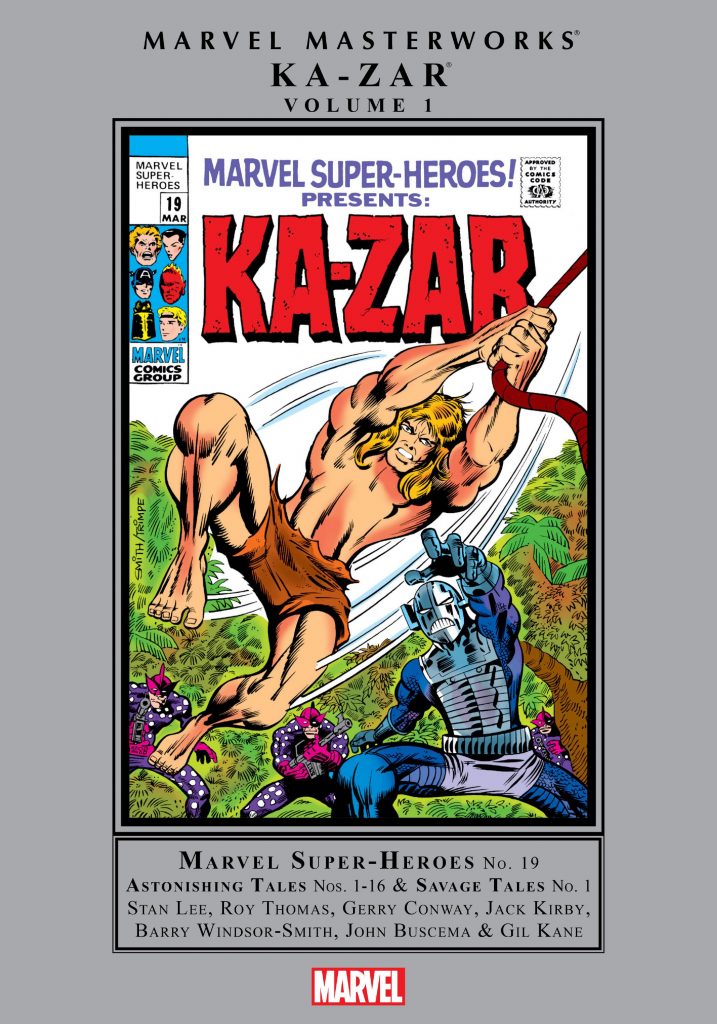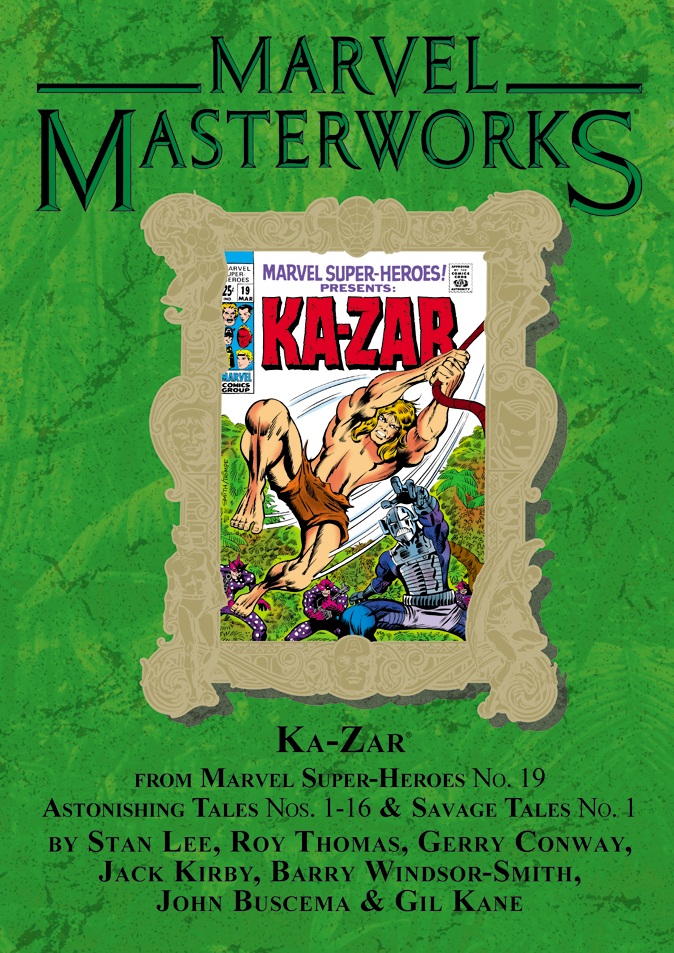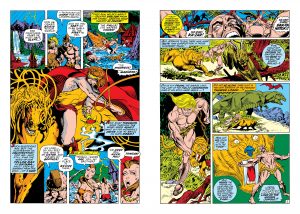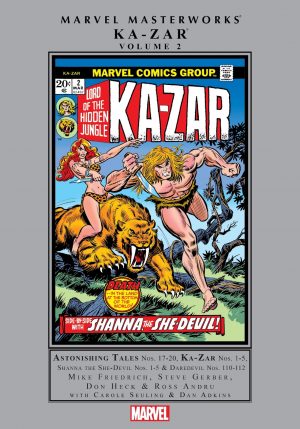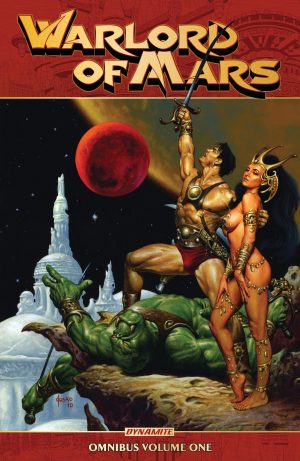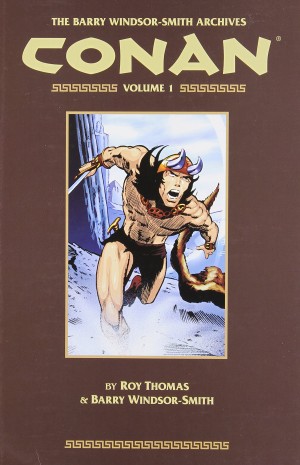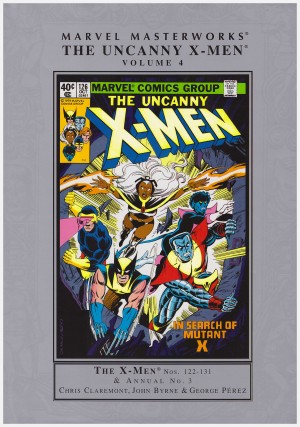Review by Frank Plowright
Lord of the Savage Land Ka-Zar, formerly Kazar, was first published by the company that would become Marvel in the 1940s, then reintroduced with his hyphenated name in ramped-up capacity early in the 1960s, in X-Men of all places. The basic concept of an intelligent warrior in a tropical land populated by savage tribes and dinosaurs is solid, even if the influences are obvious. As Roy Thomas notes in his introduction, perhaps revealing him as missing British nobility after a few appearances was over-egging the cake.
Thomas’ introductions to Masterworks volumes always set the right tone, being enthusiastic, chatty and informative, but can sometimes lead to inflated expectations as to the quality of what follows. This is one of those cases. Thomas goes some way to explaining why six different writers and six different artists were involved over just fourteen issues of a comic in which Ka-Zar only occupied half the page count for the majority. And that goes some way to explaining why much of the content is mediocre. No-one stayed on the series long enough to establish any consistency, and every new writer had their idea about what would work. Some liked the idea of Ka-Zar as English country gentleman, others realised he was at his best in the Savage Land.
On the other hand, with the exception of Gene Colan there’s work from pretty well every artist associated with Marvel in the late 1960s and early 1970s. Neal Adams, Rich Buckler, John Buscema, Sal Buscema, Don Heck, Gil Kane, Jack Kirby, Herb Trimpe, George Tuska and Barry Windsor-Smith. In fact a fair bit more Windsor-Smith than you might expect and a lot of it very nice indeed. Not all the other artists are as enthusiastic, but it’s interesting to see Trimpe aping Windsor-Smith, Kirby’s customary energy and it’s Kane who’s the other standout, his refined lines and interesting page layouts supplying some real life. Adams is present via a reprint of his black and white origin story for tragic swamp monster Man-Thing, which stands up well. It’s one of two odd interludes, the other featuring the introduction of Damien Link, who has a part to play in the next Ka-Zar reprint selection.
Unfortunately, with that cinematic idea and some great artists involved, on the evidence of this collection, no-one really came to grips with matters. Highspots are sporadic and early. Gerry Conway and then plain Barry Smith’s collaboration involving Zaladane and the Petrified Man is excellent adventure, with a widescreen look maximising the potential of the setting. Apart from that Thomas’ work with Smith involving Europeans in the Savage Land still fighting World War II has a daft pulp feel during its better moments, along with a lot of moralising.
Mike Friedrich is responsible for the two penultimate episodes, in which jungle law is imported to the streets of New York. It works as an interlude, but Friedrich would be Ka-Zar’s longest lasting writer of the 1970s, and as volume two displays, worked really hard to keep the character away from his natural environment.
This collection is cautiously recommended to art fans, but don’t try reading most of it.
